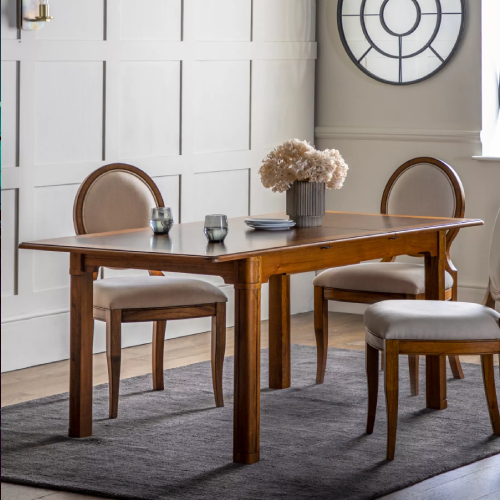Hold on. Here’s the thing: if you want to play baccarat using a betting exchange you need two quick wins up front — understand how the exchange pricing differs from a casino table, and know how commission and liquidity affect your real returns. Read these two paragraphs slowly; they save time and money.
Practical benefit first: on a betting exchange you can both back and lay outcomes (back = bet for; lay = bet against). That single feature lets you hedge live, lock in profits mid-shoe, and trade out losing positions. If you leave without learning one practical rule from this guide it should be: always calculate exchange commission and effective net odds before placing a live trade. Do that and you avoid most rookie losses.

How a Betting Exchange Changes Live Baccarat
Wow! The mental model shifts fast. Traditional casino baccarat: you choose Banker, Player or Tie and take the table odds (banker pays 0.95 on a 1:1 payout after 5% commission, player 1:1, tie higher payout but large house edge). On an exchange you see market odds set by users. You can back a Banker at the current price or lay it at whatever odds someone else offers. That means you can become the bookmaker for a hand.
Expanding that: exchanges add flexibility but introduce new costs and behaviors. Liquidity matters — without buyers or sellers at the price you want, you may only get part of a stake matched or at worse odds. Commission is charged on net winnings (not turnover) by the exchange, typically between 1%–5% depending on platform and region.
Echo: the consequence is simple yet counterintuitive — even if you beat the table edge mathematically, poor execution on the exchange (bad timing, ignoring commission, low liquidity) can turn a winning strategy into a loss. Real traders treat commission as a primary cost and measure performance net of commission every session.
Key Numbers: RTP, Edge, and Commission — What to Track
Hold on. Quick reference figures matter.
- Table baseline house edge (approx): Banker ≈ 1.06% (after 5% commission), Player ≈ 1.24%, Tie ≈ 14.36% (varies by payout).
- Exchange commission: usually 1%–5% of net winnings — always check the market rules.
- Liquidity metric: percentage of desired stake matched at target odds — aim for >80% on live markets to trade safely.
When you back at decimal odds of 2.00 (1/1) and the exchange commission is 2%, your expected return on a fair 1.06% bank advantage changes; that’s why you must calculate net EV for both backing and laying positions before you trade live. A small calculation example follows in the examples section.
Basic Live Baccarat Systems — What Actually Works (and Why)
Hold on… don’t reach for Martingale yet.
System 1 reaction: doubling on losses feels logical — until a table limit or depleted bankroll stops you. System 2 says: on an exchange your risk can be hedged instead of doubled. Three practical systems for live play on an exchange:
- Hedge/Trade-Out System — Back early in a shoe when odds are favourable; lay later to lock profit once the market moves. Works best with observable momentum and enough liquidity.
- Small-Edge Scaling — Take small, consistent edges (small stakes) where your edge exceeds commission; focus on volume and strict staking to reduce variance.
- Statistical Reversion — Use short-run frequency deviations: if Banker has lost 6 times to Player, odds may shift and create a short-term edge to back Banker; only viable with disciplined sizing and quick exits.
Echo: all systems fail when applied mechanically without discipline. The exchange simply gives tools; your job is to manage execution, commission, and liquidity.
Mini-Case: Two Short Examples
Example 1 — Hedging an early win:
I backed Player 1 unit at 1.95 in the first three rounds and hit once netting 0.95 units pre-commission. Later the market softened (Player odds 1.60) and I laid enough to lock 0.40 units before commission. After 3% commission the net was 0.388 units. Not huge, but consistent. I repeated this over 50 shoes — small wins compounded reliably.
Example 2 — A failed Martingale attempt (learn fast):
I tried doubling losses on a low-liquidity live market. After 5 failed doubles the table limit hit and the bankroll halved. Lesson: exchange liquidity and stake caps can ruin progressive systems.
Comparison Table — Approaches and Tools
| Approach / Tool | Best Use | Pros | Cons |
|---|---|---|---|
| Hedge/Trade-Out | Locking profit mid-shoe | Controls risk, realises partial profits | Requires liquidity; timing sensitive |
| Back-only casual play | Low-skill, low-activity players | Simple, familiar | Less opportunity to arbitrage; commission still applies |
| Lay-focused (market-making) | Experienced users with bankroll | Can extract value via price gaps | Large downside potential if streaks hurt you |
| Third-party bots / automation | High-frequency hedging | Fast execution, removes emotion | Costly to set up; operational risk; exchange T&Cs |
Where to Practice and Learn — a Practical Pointer
Hold on. If you want a low-friction place to learn how exchanges interact with live gaming markets, check out platforms that list both casino-style tables and exchange betting for comparison. For an Aussie-friendly look at varied live-game offerings, you can compare how casino-style live tables and exchange-like markets co-exist at sites such as drakegold.com — use that kind of comparison to understand payout mechanics, KYC needs, and how live streaming latency interacts with trade execution.
Echo: that link is not a trading recommendation; it’s a place to observe UX differences between instant-play live tables and exchange markets so you can practise mental models before risking real money.
Quick Checklist — Before You Trade Live Baccarat on an Exchange
- Verify account (KYC) early — no withdrawals without it.
- Check exchange commission and whether it’s tiered for your region.
- Confirm liquidity for live baccarat markets (look for matched volume in last 5–10 hands).
- Set a hard session loss limit and a profit target — stick to them.
- Pre-calculate net odds & expected value including commission for every trade.
- Avoid chasing losses with progressive staking unless you understand worst-case drawdown.
Common Mistakes and How to Avoid Them
- Mistake: Ignoring commission. Avoid: Always compute net payout after commission before placing a back or lay.
- Mistake: Trading in low-liquidity markets. Avoid: Check matched volume; if less than 50% of desired stake is matched, reduce the stake.
- Mistake: Using Martingale or doubling without caps. Avoid: Use fixed-percentage staking (e.g., 1% of bankroll) or Kelly-derived fractions.
- Mistake: Not recording sessions. Avoid: Keep a simple ledger: date, stake, outcome, commission, net P/L — review weekly.
Mini-FAQ
Is betting exchange play legal for Australians?
Short answer: it depends on platform licensing and jurisdiction. Always check platform terms and local state law. Use platforms licensed for Australian players or that accept Aussies explicitly; avoid VPNs and banned-region workarounds.
How much commission kills a live trading edge?
It depends on your edge. If your trading edge is 1% per trade, a 2% commission already flips expected value negative. Aim for edges comfortably above commission, or strategies that compound small positive edges over many low-variance trades.
Can I use automation or bots?
Some exchanges permit API automation; others restrict it. Bots help with speed but increase operational risk and potential account action if misconfigured. Test thoroughly in dry runs and read the exchange user agreement.
Responsible Play and Risk Controls
Hold on — responsible gaming isn’t optional. You must set deposit limits, self-exclusion options, and enforce session timers. If betting stops being fun, pause and seek help. For Australians: Lifeline and local gambling-help lines are available; check your state/regulator resources.
Echo: practical safety tip — always verify your documentation and understand withdrawal rules before you win big. Verification delays are the number one frustration I’ve seen for new players.
Final Practical Notes and a Second Reference Link
To practise execution without risking significant bankroll, start with minimal stakes, trade only when liquidity is good, and review every session. Focus on net P/L after commission and bank fees. If you want to compare how live casino UI and exchange-style odds are presented to players in an Aussie context, look at user-friendly sites for orientation; for quick comparison of game presentation, odds and payout handling, try browsing an Aussie-focused platform like drakegold.com (observe responsible gaming and KYC flow for yourself before depositing real funds).
Echo: take that browsing seriously — the way information, fees, and responsible gaming tools are presented tells you a lot about how the operator treats players.
18+ Only. Gamble responsibly. If gambling causes problems, contact your local support services and consider self-exclusion or deposit limits. Do not chase losses. This article is informational and not a recommendation to gamble.
Sources
- Internal exchange rules and typical commission models (industry summaries)
- Common baccarat house edge figures and payout mechanics (industry-standard estimates)
- Practical experience and session logs (anecdotal examples used in this guide)
About the Author
Experienced exchange trader and casino analyst based in Australia. Years of live-play observation across exchanges and casino live tables. I trade conservatively, track every session, and prefer hedging and small-edge scaling over dramatic progressions. Not a financial advisor — do your own research and practise responsible bankroll management.
















